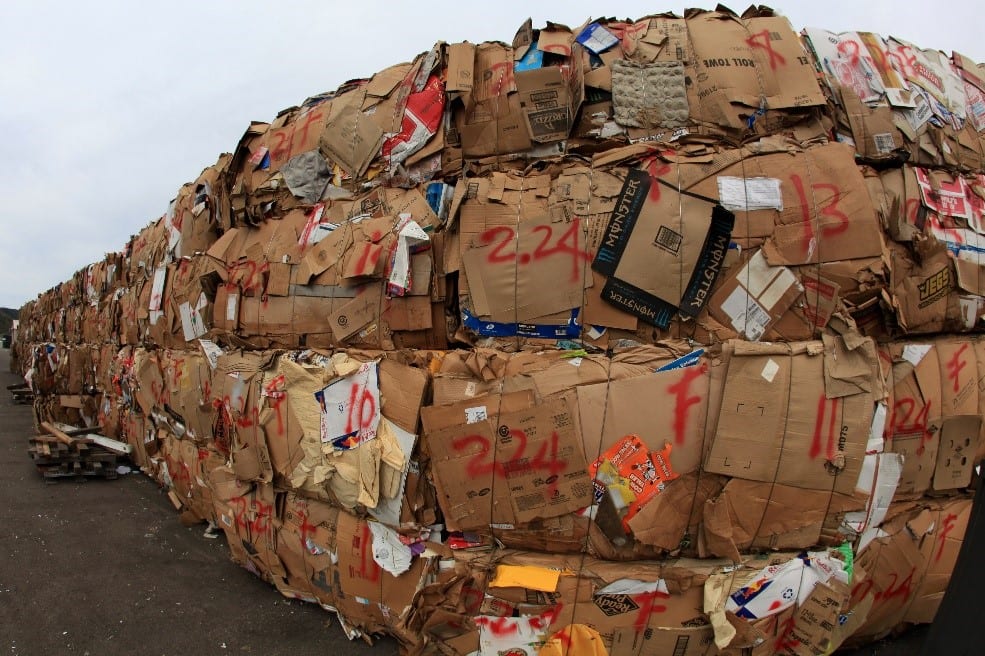
What we did:
In Spring 2019, New Heights interviewed numerous market participants in the U.S. scrap material recovery and recycling value chains, including material recovery facilities (“MRFs”) and public agencies, as well as several market experts from associations and trade groups.
What we found:
1. China’s changing policies have caused severe disruptions in the U.S. recycling value chain.
In recent years, China has implemented a wave of quality-based restrictions for recycling scrap and these policies have caused severe disruptions in the U.S. recycling value chain. With the newest of these policies, called “National Sword” (announced at the beginning of 2018 and implemented in March of 2019), China announced that it would no longer accept bales of scrap material from outside countries (the US, in particular) unless the bales met extremely low levels of “contamination” (the presence of nonrecyclable material in the bales). This effectively closed significant parts of China’s recycling market to U.S. scrap exporters, as they were largely unable to meet these new, exacting specifications. Indeed, U.S. exports to China of mixed paper and mixed plastics, both already down significantly from 2017 to 2018, have dropped to near-zero since March of this year. U.S. media outlets soon made alarming reports that tons of scrap materials – which had earlier been recycled – were now being diverted to landfills.
2. The severity of the impacts in the U.S. were not evenly distributed. West Coast scrap collectors, processors, and exporters have been hit hardest, while operators in other U.S. regions were largely insulated from the worst effects.
Given China’s historic demand for recycled materials, and their geographic proximity to ports serving Chinese merchant ships, West Coast-based material recovery facilities were dependent on exports to Chinese processors for their streams of collected scrap. MRFs on the West Coast have for years sent their scrap to China, refilling now-empty shipping containers that had arrived bearing Chinese goods for U.S. companies and consumers. Minimal investments were made, as a result, in the regional infrastructure required to process material scrap – and domestic end-markets for recycled scrap remained underdeveloped. In contrast, the Midwest and Eastern regions of the U.S. have much more developed downstream materials processing sectors. Additionally, domestic end-markets drive most of the demand for recovered materials in those regions.
3. New Asian markets have emerged for the scrap materials now declined by China.
Reaction in the US and Asia to China’s implementation of the National Sword policy was swift. New Heights estimates that, as of Summer 2019, roughly 90% of the export stream that was previously sent to China has now been redirected to other markets. India and Southeast Asia (including Thailand, Viet Nam, and Malaysia) constitute the major destinations, with Mexico, Korea, and Japan processors representing smaller importers. Some scrap overflow is also still being sent to landfill.
4. MRFs in the U.S. have aggressively pursued strategies to mitigate the negative impacts of China’s restrictive policies.
Lowering the “contamination” in their scrap output has been a major priority for material recovery facilities, particularly for those located on the West Coast. Principal strategies have included: adding labor to, and slowing the speed of, their material sorting lines; investing in technologies to improve sorting efficiency and accuracy; and partnering with municipal customers to improve the ways in which they prepare and collect materials at the source.
5. The current situation remains in flux and the “new normal” has yet to fully-materialize.
Asian destinations for U.S. scrap continue to evolve as emerging markets (India, for example) open to scrap imports, hoping to benefit from near-term economic gain. Chinese processors have played a significant role in opening other Asian markets, as they have bought or leased land outside China in order to take, process, and often landfill, U.S. scrap. At the same time, the environmental effects on these local ecosystems are forcing political counter-reactions and, in some instances, market (re)closures.
6. For informed investors, there are promising opportunities to profitably place capital with successful U.S. companies poised for growth in the domestic scrap materials processing and recycling sectors.
Large investments are now being made in the U.S. scrap processing infrastructure, and recycling capacities and capabilities, especially in the West Coast region. Domestic end-markets for recycled scrap are developing and maturing further, and it’s expected that future U.S. recovered material streams will be much less dependent on export markets for processing and end-reuse. Additionally, U.S. MRFs and municipalities are actively engaged in finding innovative, novel methods for processing scrap materials more effectively and preventing them from being land-filled ultimately. Well-positioned companies across this value chain will need smart, growth capital to enable them to fully capitalize on the opportunities before them.
We hope you found this post an insightful read and encourage you to comment below and/or reach out to New Heights to learn more.
